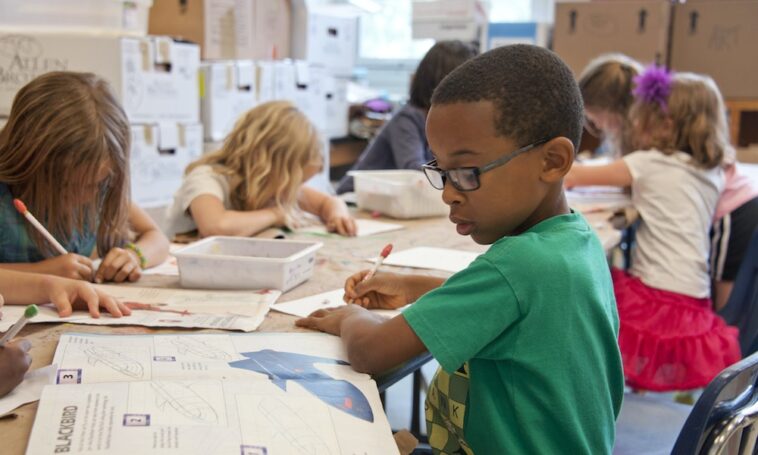Flipped classroom learning has gained popularity in recent years as an innovative educational approach that shifts the traditional classroom dynamic. In a flipped classroom, students are introduced to new concepts and materials outside of class, typically through video lectures or online resources, while class time is dedicated to active learning activities and discussions. This article explores the five best benefits and challenges associated with flipped classroom learning, shedding light on its effectiveness and potential drawbacks.
Flipped classroom learning is an instructional approach that reverses the traditional order of teaching and learning. Instead of delivering lectures and introducing new concepts during class time, teachers provide instructional content in advance for students to review independently outside the classroom. This allows the room time to be utilized for collaborative activities, discussions, problem-solving, and individualized support.
Read More: How Can Microsoft Teams Be Used to Set Up a Virtual Classroom?
Explore the Contents
- 1 5 Best Benefits and Challenges of Flipped Classroom Learning
- 2 Conclusion
- 3 FAQs
5 Best Benefits and Challenges of Flipped Classroom Learning
Benefit 1: Enhanced Student Engagement
One of the primary benefits of flipped classroom learning is enhanced student engagement. By pre-learning the content, students come to class prepared and ready to actively participate. They have already acquired a basic understanding of the topic, which allows them to engage in higher-order thinking skills, ask insightful questions, and contribute meaningfully to class discussions. This active involvement fosters a sense of ownership over the learning process and promotes deeper understanding.

Benefit 2: Personalized Learning Experience
Flipped classroom learning offers a personalized learning experience for students. They can access the instructional materials at their own pace, allowing them to revisit challenging concepts or skip ahead if they have already grasped the content. This flexibility enables students to tailor their learning journey according to their individual needs and learning styles, promoting a more effective and personalized educational experience.
Benefit 3: Flexibility and Self-Paced Learning
Another advantage of flipped classroom learning is the flexibility it offers to students. They have the freedom to review the instructional materials at any time and any place, as long as they have access to the necessary resources. This self-paced learning approach accommodates diverse student schedules and allows individuals to allocate more time to topics they find challenging while progressing quickly through familiar content. It promotes autonomy and responsibility, preparing students for independent learning in higher education and the workforce.
Benefit 4: Deeper Understanding and Critical Thinking
Flipped classroom learning promotes deeper understanding and critical thinking skills among students. By engaging with the instructional materials before class, students have the opportunity to reflect on the content, connect it to real-life examples, and develop a foundational knowledge base. In the classroom, they can engage in meaningful discussions, analyze complex problems, and apply their knowledge to practical scenarios. This active learning approach encourages higher-order thinking skills, such as analysis, synthesis, and evaluation, fostering a deeper understanding of the subject matter.
Benefit 5: Improved Teacher-Student Interaction
Flipped classroom learning enhances teacher-student interaction and facilitates personalized support. With the lecture component moved outside of class, teachers have more time to engage with individual students and provide targeted guidance. They can identify and address specific learning needs, offer one-on-one assistance, and provide immediate feedback on student progress. This personalized interaction strengthens the teacher-student relationship, fosters a supportive learning environment, and increases the effectiveness of instruction.
Challenge 1: Technological Requirements and Accessibility
Implementing flipped classroom learning requires access to suitable technology and reliable internet connectivity. Students must have access to devices such as computers, tablets, or smartphones to access the instructional materials. Lack of access to technology or reliable internet connectivity can create a barrier for students, particularly those from disadvantaged backgrounds, exacerbating existing inequalities in education.

Challenge 2: Motivating Students and Ensuring Accountability
Motivating students to complete the pre-learning activities and ensuring accountability can be a challenge in a flipped classroom. Some students may lack the self-discipline or intrinsic motivation to engage with the materials independently. Teachers must implement strategies to encourage active participation, such as setting clear expectations, providing incentives, and incorporating interactive elements in the pre-learning resources.
Challenge 3: Time Management and Preparation
Flipped classroom learning requires effective time management from both students and teachers. Students need to allocate sufficient time to review the instructional materials, which may vary depending on the complexity of the content. Teachers must also invest time in curating or creating high-quality resources, ensuring their alignment with the learning objectives, and providing clear instructions for independent study. Balancing the workload and ensuring efficient time utilization is essential for the success of a flipped classroom approach.
Challenge 4: Potential for Inequity
Although flipped classroom learning offers many benefits, there is a potential for inequity. Students from disadvantaged backgrounds may face challenges accessing the necessary technology or resources outside of the classroom. This can create a disadvantage and widen the existing achievement gap. Teachers must be mindful of these disparities and provide alternative options or support for students who face barriers to access.
Challenge 5: Resistance to Change and Adaptability
Implementing a flipped classroom approach may face resistance from both students and educators. Some students may prefer the traditional lecture-based learning model and resist the shift to a more independent and active learning style. Similarly, teachers may find it challenging to adapt their instructional methods and classroom management techniques to accommodate the flipped classroom model. Overcoming resistance to change and providing support for both students and teachers during the transition is crucial for successful implementation.

Conclusion
Flipped classroom learning offers numerous benefits, including enhanced student engagement, personalized learning experiences, flexibility, deeper understanding, and improved teacher-student interaction. However, it also presents challenges such as technological requirements, motivating students, time management, potential inequity, and resistance to change. By addressing these challenges and capitalizing on the benefits, educators can create a dynamic and effective learning environment that prepares students for success in the 21st century.
Read More: The Future of Education: Virtual and Augmented Reality in the Classroom
FAQs
Q1: Is flipped classroom learning suitable for all subjects?
A1: Flipped classroom learning can be adapted to various subjects, but its suitability depends on the learning objectives and instructional methods. It is more commonly used in subjects that involve problem-solving, critical thinking, and discussion-based activities.
Q2: How can teachers ensure that students engage with the pre-learning materials?
A2: Teachers can implement strategies such as quizzes, interactive exercises, and small assignments related to the pre-learning materials to ensure students’ engagement and accountability.
Q3: What if students don’t have access to the required technology for flipped classroom learning?
A3: In such cases, schools and educators can explore alternative options, such as providing access to computer labs, loaning devices, or distributing printed materials for those without access to technology.
Q4: Can flipped classroom learning be combined with traditional teaching methods?
A4: Yes, flipped classroom learning can be combined with traditional teaching methods to create a blended learning approach that incorporates both independent study and in-class activities.
Q5: What are some successful examples of flipped classroom implementation?
A5: Many educational institutions have successfully implemented flipped classroom learning. Examples include the Khan Academy, where students watch video lectures at home and solve problems in class, and the University of British Columbia, where pre-learning materials are used to facilitate active discussions and collaborative projects.



